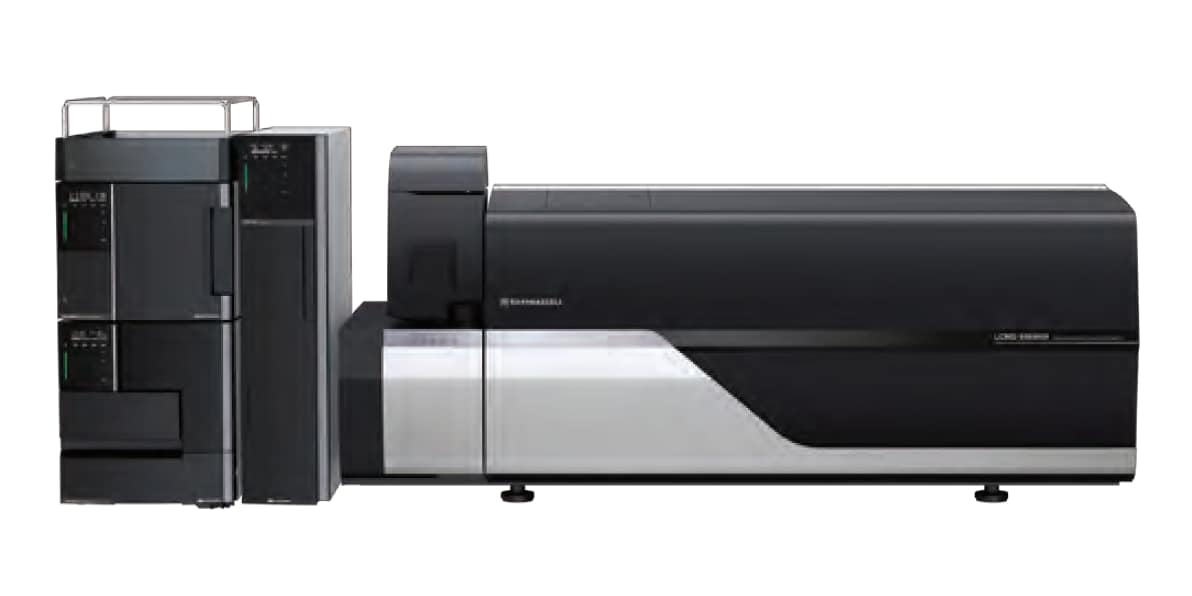Solutions for the Analysis of Per- and Polyfluoroalkyl Substances (PFAS)
PFAS In Focus - Webinar Series
Join us for PFAS in Focus, a comprehensive and exclusive webinar series sponsored by Shimadzu, covering the basics and beyond about the analysis of Per- and Polyfluoroalkyl Substances (PFAS) in the environment. Join our experts, live or on-demand after the original air date, to demystify the challenges of PFAS analysis and gain the insights you need.
Per- and polyfluoroalkyl substances (PFAS) are a group of persistent and harmful chemicals that can be found in a variety of environmental samples, including drinking water, wastewater, biosolids, soils, air, and animal tissue. With concerns rising quickly about the health risks associated with PFAS exposure, along with the ongoing development and implementation of regulations across the world, it is important to ensure proper monitoring of these chemicals in the environment.
Shimadzu offers a variety of analytical solutions for PFAS testing in environmental samples in accordance with standardized PFAS analytical methods, such as:
- - Drinking water: EPA Methods 537.1 and EPA 533.
- - Wastewater: EPA Method 1633 and ASTM Method D8421.
- - Groundwater, surface water and leachates: SW-846 Method 8327, EPA Method 1633 and ASTM Method D8421.
- - Soil and biosolids: EPA Method 1633 and ASTM Method D8535.
- - Tissues: EPA Method 1633.
Shimadzu’s ready-to-use method packages and other vetted applications also address PFAS analysis requirements from the Department of Defense (DOD) and can be used to rapidly start new analytical workflows in your laboratory, using Single Quadrupole, Triple Quadrupole or Quadrupole Time-of-Flight Mass Spectrometers, in combination with LabSolutions and Insight software.
These solutions will enable you to efficiently implement PFAS analysis workflows in your laboratory.
Resources
Shimadzu's robust LC-MS/MS systems for PFAS testing in environmental matrices are easy to use. They have been vetted for EPA methods for drinking water (EPA 537.1, EPA 533), wastewater (EPA 1633) and more, providing effective, consistent performance and the high-quality results needed to meet the analytical demands in modern laboratories.
Compare Shimadzu’s LC-MS/MSs here. With a range of options, Shimadzu can easily meet the needs for high-throughput routine PFAS analysis or more specialized applications.
PFAS Analysis Demystified
Efficiently quantifying the presence of PFAS in different types of environmental samples can be overwhelming, and three frequent issues deepen this challenge:
- Ruling out the LCMS instrument as the source of the PFAS contamination
- Streamlining the data process and review for optimal turnaround times of PFAS results
- Accessing support resources to expand the ever-growing workflows for PFAS
This video presents vetted LC/MS/MS methods and software designed to streamline PFAS analytical workflows by minimizing these three bottlenecks in the process.
Analysis of PFAS in Drinking Water
Shimadzu offers ready to use method packages, handbooks of analysis, how-to guides, and more for PFAS testing in Drinking Water samples in accordance with EPA Methods 533 and 537.1.
/how-to-epa-guides.png)
Get your lab ready: How-to Guides for PFAS analysis
View our How-to guides for EPA 537.1 and EPA 533 to learn::
- How to set up your Lab for PFAS analysis
- What you need to prepare before running your first PFAS samples
- How to prepare your samples for PFAS analysis
- How to analyze your PFAS samples in LC-MS/MS
PFASuccess Story - RJ Lee Group
Learn how Shimadzu can help you achieving success for testing PFAS in environmental and other sample types, like consumer products and more, whether you are doing targeted analysis by LC-MS/MS following EPA or ASTM methods (537.1, 533, 1633, 8421…) or suspect screening and non-targeted analysis by Q-TOF. Discover the PFASuccess Story from RJ Lee Group in this video.
Where limits end, forever begins – testing forever chemicals globally
The Research Center for Eco Environmental Sciences, Chinese Academy of Sciences (RCEES) in partnership with Shimadzu Corporation is pioneering high-throughput analytical techniques to tackle the growing challenge of PFAS contamination. Leveraging advanced mass-spectrometry and ultrashort-chain compound detection, their joint work aims to accelerate global solutions for emerging environmental pollutants.
Meet your expert partners for PFAS Analysis
Environmental labs across the country – and around the world – are ramping up their response to deliver analysis of legacy and emerging PFAS compounds, with lower detection limits, and shorter turn-around times. To make this process as effective and efficient as possible, these labs are leaning on their technology partners to help with instrument selection, set-up, method development, and training. Watch these four videos to meet some of the Shimadzu experts working with customers now to:
- Provide pre-optimized methods for PFAS analysis (EPA 533, 537.1)
- Troubleshoot and streamline workflows
- Incorporate PFAS analysis into routine operations
- Ensure easy access to the latest PFAS monitoring tools
High-performance LC/MS and LC-MS/MS Instruments
Shimadzu’s offers a complete line-up of high-performance LC/MS and LC-MS/MS instruments for the ultimate in ultrafast LC-MS analysis without compromising sensitivity or durability for the analysis of PFAS and other organic contaminants. Learn about each of these platforms here.
Applications
Access below our featured applications and other documents that will help you to streamline your PFAS analysis workflows.
EPA Method 1633: Method Detection Limits of Per-and Polyfluoroalkyl Substances (PFAS) in Aqueous Matrices using the Triple Quad LCMS-8060NX
Regulations for controlling the occurrence of PFAS in different environmental samples are developing fast. With the final approval of EPA method 1633, environmental laboratories have now a new standardized method to respond to the demand for PFAS analysis in complex environmental samples, such as wastewater, solid, biosolids, and tissue. Discover how to achieve reproducible results and quantification 10x lower than the EPA’s Limit of Quantitation for the analysis of PFAS wastewater according to EPA Method 1633.
EPA 537.1 for PFAS analysis with the Shimadzu LCMS-8050: Demonstration of instrument and method performance.
Here we provide a framework for laboratories to evaluate the performance of each the individual steps performed in the laboratory for the analysis of PFAS by EPA method 537.1, including extraction and instrumental analysis. Discover how to implement an enhanced workflow that consistently achieves up to four times better detection limits for all targeted classes PFAS included in EPA method 537.1, even with a small injection volume of 2 µL using the Shimadzu’s LCMS-8050.
EPA 533 for PFAS analysis with the Shimadzu’s LCMS-8050: Demonstration of instrument and method performance.
The enhanced analytical workflow (including sample preparation) from this work provides greater efficiency, achieving over 50% faster run times and reduced injection volumes down to 2 µL, for supporting PFAS regulation in drinking water. This leads to quicker analyses, less solvent use, and improved lab productivity. Learn more about the performance of the Shimadzu LCMS-8050 as part of a complete workflow for analyzing the target PFAS specified in EPA method 533.



/pfas-infocus-500px.jpg)
/pfas-infographic-thumb.png)
/pfas-methods-poster-thumb.png)
/pfas-faqs-thumb-330px.png)
/rjleep-group.jpg)
/lcms-method-package-pfas-drinking-water-thumb.png)
/request-info-tile.png)

/rj-lee-thubnail.png)
/pfas-article-academy-science.png)
/pfas-expert-videos-thumb.png)

/ssi-lcms-154.jpg)
/SSI-LCMS-159-pdf-thumb.png)
/SSI-LCMS-158-pdf-thumb.png)